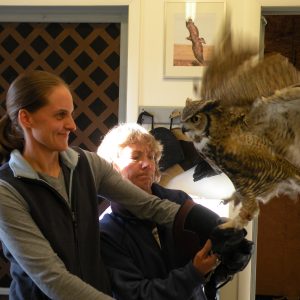This month I’ve spent mostly indoors in the Portland BLM office working on updating and editing the Survey and Manage website (http://stg.or.blm.gov/or/plans/surveyandmanage/index.htm) which is getting moved to a new site with a new format. It’s a very tedious and time consuming project and not at all worth talking about at length BUT I did get to go outside one day…
I was invited to attend the Wildlife and TES (Threatened & Endangered Species) Program Manager Meeting for their field trip day in HJ Andrews Experimental Forest located just east of Eugene, OR. We visited a series of sites and discussed the variety of thinning methods they are testing in an effort to create and maintain healthy forest ecosystems in the post-clearcut environment. Coming from the southeast, it was interesting to learn more about the overwhelming number of problems stemming from the lack of old-growth forests in this region. Since all of the trees are now approximately the same age and size, foresters are experimenting with an assortment of decapitation techniques to kill a portion of the trees and create habitat for certain snag-dependent species (primarily woodpeckers). They showed us how they’ve been monitoring changes in the vegetation and wildlife species like flying squirrels and terrestrial amphibians. In 2009, they even discovered a new species of slug: Carinacauda stormi a.k.a. the Cascade Axetail.
I was also amazed to hear the different attitudes toward Barred Owls in Oregon. They present a problem similar to coyotes in Florida… Sure, they’re native to the country but they’ve only been able to spread to this area because of the changes we have made to the landscape and wildlife populations. I was aware that they sometimes interbreed with the Northern Spotted Owls (to create “Sparred” and “Botted Owls” : ) but I hadn’t heard about the Fish and Wildlife proposal to “remove” some of them (yep, that’s a euphemism). I refuse to become one of those people who oppose an issue for personal reasons and ignore the ecological benefits, but it does seem to be an uphill kind of battle.
My ulterior motive for the day was to make acquaintances with a couple of individuals who will still be conducting fieldwork over the winter months and I succeeding in doing that. I hope to never be faced with the decision of whether or not I should post a picture of myself sitting in my cubicle. I know that I’m helping to push a lot of important low-priority projects through that have been put off for years but mostly it just feels like a lot of computer work. At least next week I know I’ll be out hunting slugs and I CAN’T WAIT!
Lara Drizd, Forest Service Regional Office & BLM State Office, Portland, OR



















